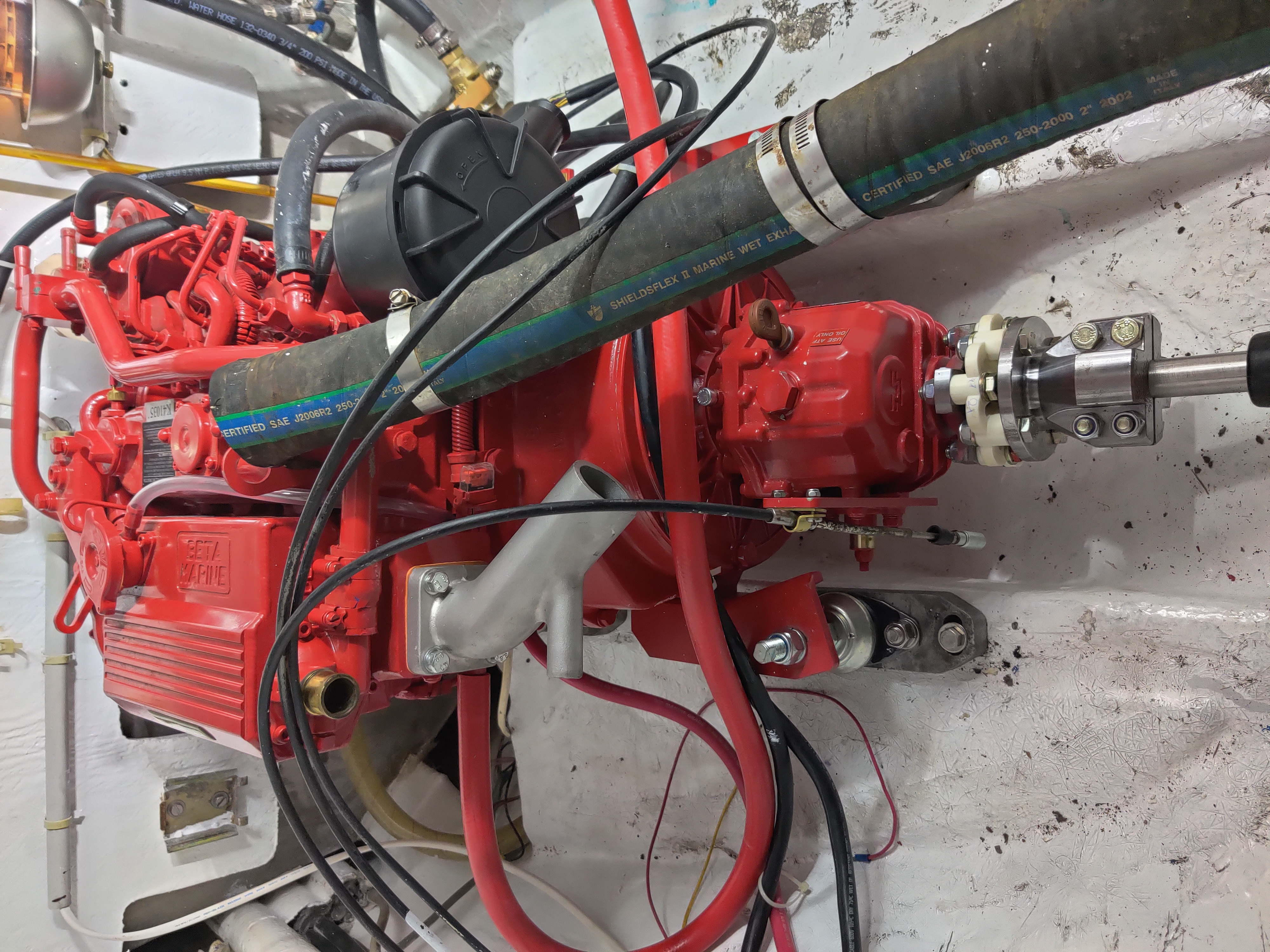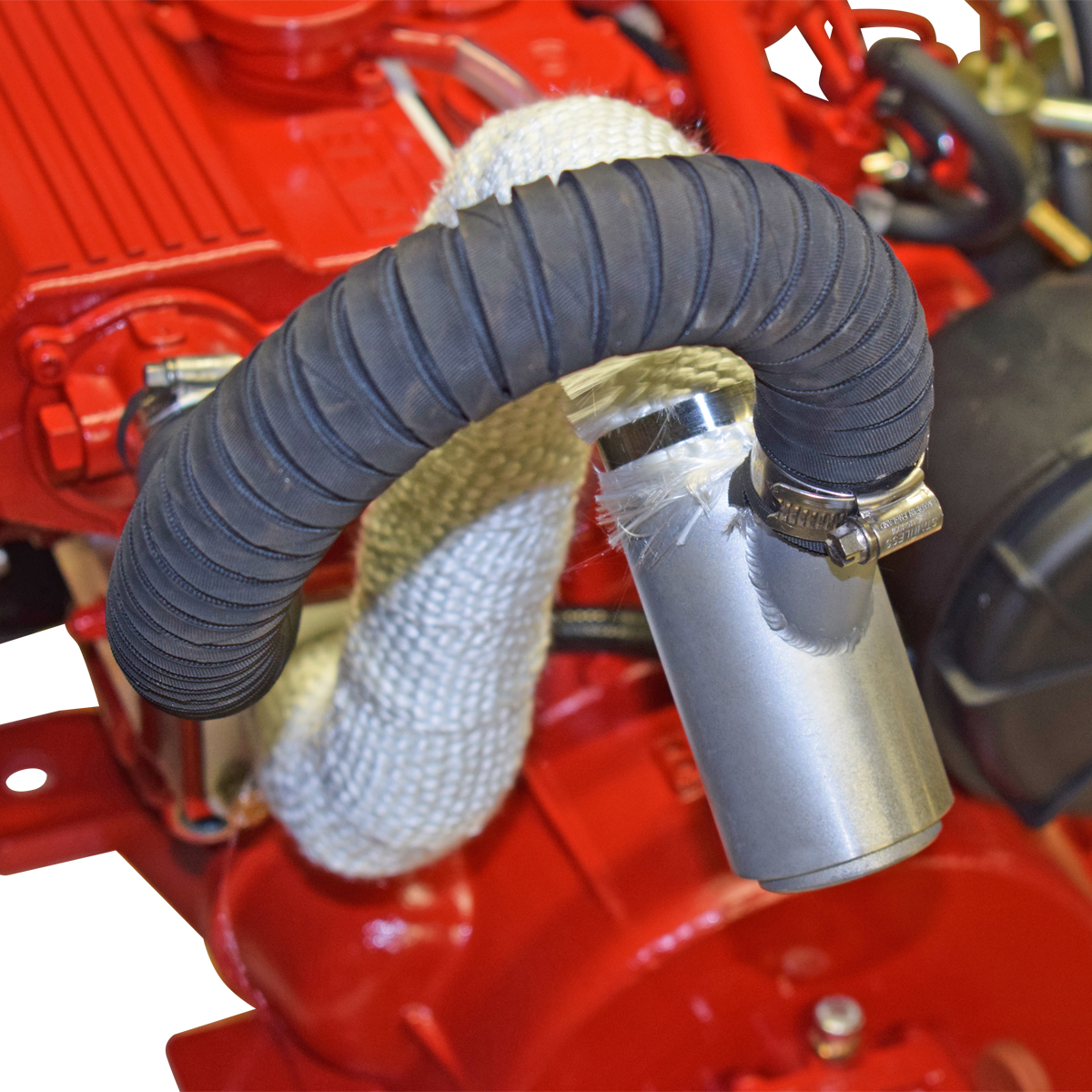Well, this was a TON of work, but it seems like everything is coming together. Here’s a quick video showing the engine running for the first time. Both engines now have an hour on them.
Exhaust systems are way, way, way more complicated than I thought. I read about a ton of design tricks and looked at a few blogs that explain how easily you can screw up, with catastrophic outcomes (salt water in the engine). This happened more than once for me on the old engines. I’m sure it happened before I purchased the boat. It’s not good at all for water to be in the cylinders, and this all stems from a crappy exhaust system design.

 So, I ordered this special exhaust riser from Beta (this picture is from the sales literature). This goes up another 8 inches, which is probably enough. I might just have a custom one built that gives me more like 12 or 16 inches, putting the exhaust water mixing elbow above the waterline, and, if possible, even above the final exhaust elbow. This means that if the muffler fills with water, it just drains out the back side rather than destroying the engine. Right now, I’ll need a vented loop to prevent this, so I’ll be replacing the black hose in this diagram with a hose going straight up to the roof of the engine room.
So, I ordered this special exhaust riser from Beta (this picture is from the sales literature). This goes up another 8 inches, which is probably enough. I might just have a custom one built that gives me more like 12 or 16 inches, putting the exhaust water mixing elbow above the waterline, and, if possible, even above the final exhaust elbow. This means that if the muffler fills with water, it just drains out the back side rather than destroying the engine. Right now, I’ll need a vented loop to prevent this, so I’ll be replacing the black hose in this diagram with a hose going straight up to the roof of the engine room.
I would love it if the vented loop also let some water out the side, above the water line. This would mean that some of the water would not go into the muffler, which does several things: - It reduces back pressure since there is less water to build up and push out - It gives you a visual indication of water flowing even before it gets to the exhaust (instant check) - Excess water stuck in the vented loop hose will drain off the side, giving more leeway before the water fills the muffler. - It lowers the amount of water going into the exhaust, which is fine because the exhaust only needs about 1⁄3 of the water from the engine to get it cool enough for the 200 degree hose, and I’ll only be diverting about 1⁄3.